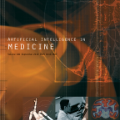Concerns for the resilience of Cyber-Physical Systems (CPS)s in critical infrastructure are growing. CPS integrate sensing, computation, control, and networking into physical objects and mission-critical services, connecting traditional infrastructure to internet technologies. While this integration increases service efficiency, it has to face the possibility of new threats posed by the new functionalities. This leads to cyber-threats, such as denial-of-service, modification of data, information leakage, spreading of malware, and many others. Cyber-resilience refers to the ability of a CPS to prepare, absorb, recover, and adapt to the adverse effects associated with cyber-threats, e.g., physical degradation of the CPS performance resulting from a cyber-attack. Cyber-resilience aims at ensuring CPS survival by keeping the core functionalities of the CPS in case of extreme events. The literature on cyber-resilience is rapidly increasing, leading to a broad variety of research works addressing this new topic. In this article, we create a systematization of knowledge about existing scientific efforts of making CPSs cyber-resilient. We systematically survey recent literature addressing cyber-resilience with a focus on techniques that may be used on CPSs. We first provide preliminaries and background on CPSs and threats, and subsequently survey state-of-the-art approaches that have been proposed by recent research work applicable to CPSs. In particular, we aim at differentiating research work from traditional risk management approaches based on the general acceptance that it is unfeasible to prevent and mitigate all possible risks threatening a CPS. We also discuss questions and research challenges, with a focus on the practical aspects of cyber-resilience, such as the use of metrics and evaluation methods as well as testing and validation environments.
翻译:暂无翻译



